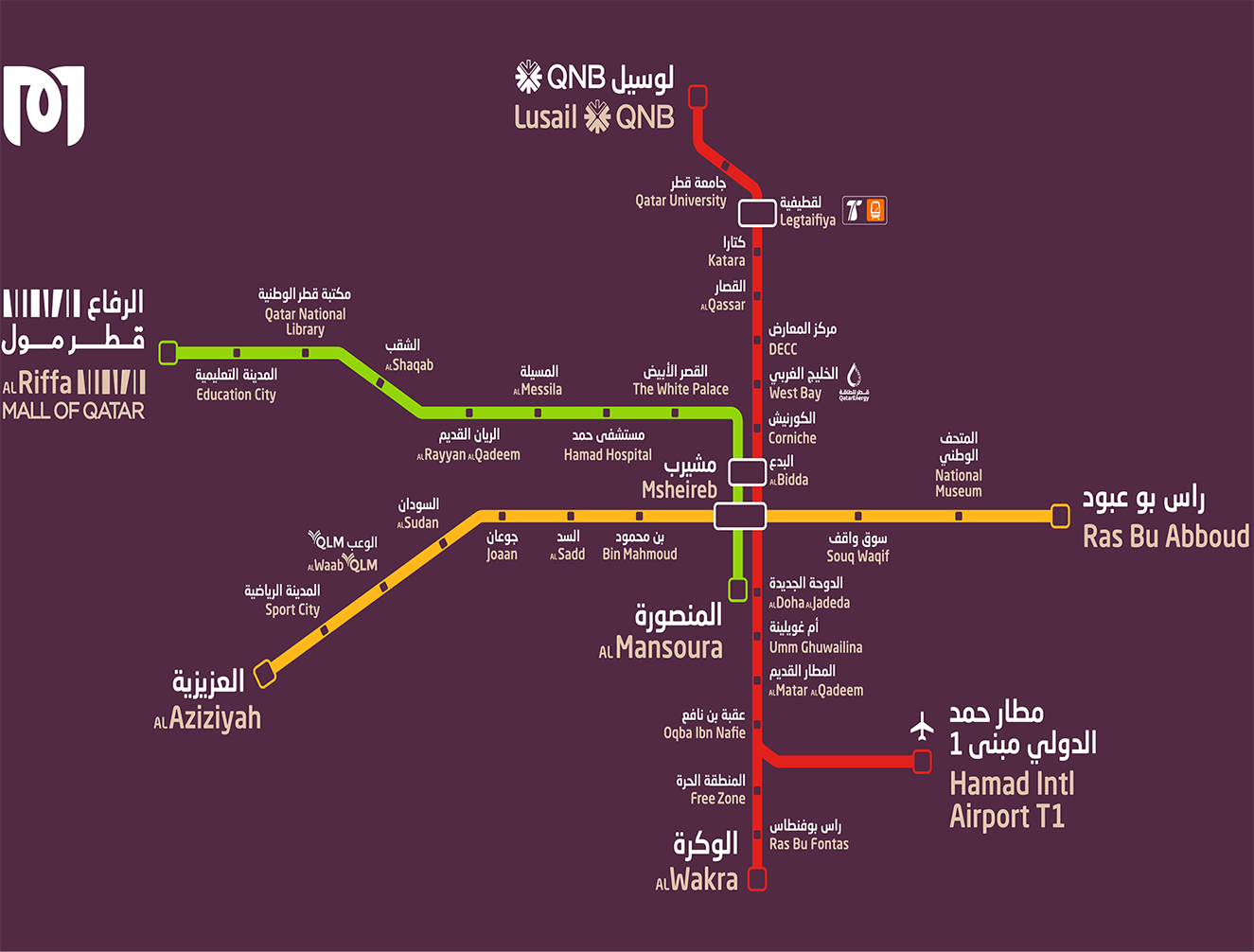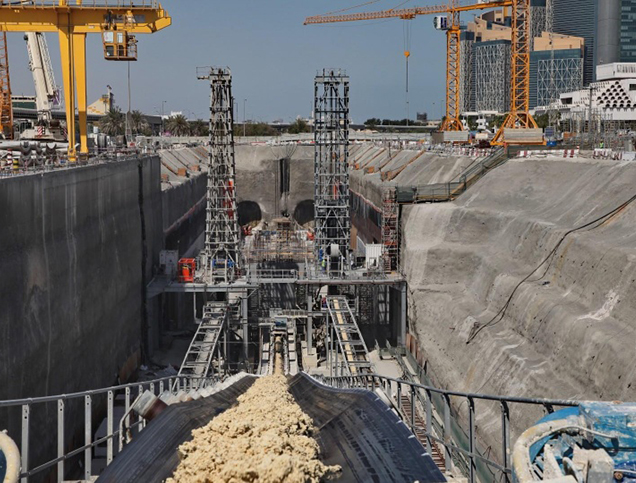
Close
responsive-lightbox domain was triggered too early. This is usually an indicator for some code in the plugin or theme running too early. Translations should be loaded at the init action or later. Please see Debugging in WordPress for more information. (This message was added in version 6.7.0.) in /home/kiju52ce/public_html/development/wp-includes/functions.php on line 6114updraftplus domain was triggered too early. This is usually an indicator for some code in the plugin or theme running too early. Translations should be loaded at the init action or later. Please see Debugging in WordPress for more information. (This message was added in version 6.7.0.) in /home/kiju52ce/public_html/development/wp-includes/functions.php on line 6114
Approach Words: Integrated City, Sustainability, Urban Livability
Public Policy Instruments: Organization, Physical Intervention, Planning
Doha Metro is an underground and elevated rail network of 75 trains, running across the city and suburbs of Doha1. Expected for completion by 2026, it will run along 300 km through four lines across the city2. The metro project responds to the Qatar National Vision 2030i and played a significant role as an efficient transportation system during the World Cup in 2022. Doha metro is part of the larger integrated public transport system of Qatar, and seeks to improve the quality of life for residents and its visitors3. It promotes economic growth both nationally and within cities, as it aims to enable the faster, more affordable, and more effective flow of goods and services into and out of the city4.

Title: Doha Metro route map.
Source: Click Here

Title: Doha Metro guiding network map.
Source: Click Here

Title: The underground infrastructure implementation of the Doha Metro.
Source: Click Here

Title: One of the metro lines stop station underground.
Source: Click Here
Stated as one of the fastest driverless metro systems in the world, the Doha metro is able to reach a speed of 100km per hour5. The metro became operational in 20196, running across 76 km7 with three lines and 37 stations, with a capacity of 8,000 passengers per hour for each line8.
The red line consists of 18 stations, with a total length of 40 km and connects Al Wakra in the south to Lusail in the north, via the Hamad International Airport9. The green line runs along 22 km, with 11 stations, from Al Riffa to Al Mansoura, while the gold line is 14 km in length and connects Ras Bu Abboud to Al Aziziyah through 11 stations10.
The blue line, expected to be completed by 2026, is a 17.5 km long semi-circular line along a length of 17.5 km with 4 stations, linking West Bay and Airport city north areas along the main C-Ring road11.

Owner/Developer (Public)

Consultant/Designer
The Doha metro project is part of the larger transportation plan for Qatar, which consists of long distance and freight links between Qatar and other countries in the Gulf Cooperation Council (GCC)12. The plan also consists of the Lusail tram project, connected to the Doha metro, and providing intra city transportation in Lusail13.
The Doha metro project has been under implementation over two key phases:
The project is initiated and developed by Qatar Rail19, a state-owned railway company, responsible for the design and development of the country’s rail network20 21. It is funded by Qatar Development Bank (QDB)22. Additionally, contracting services were also rendered from DB Engineering & Consulting23, Webuild24, QDVC25, PORR26 and Al Jaber Engineering27. The red line is implemented in two parts, north and south line, where the overall estimated project cost is $36bn28. The metro network is being operated and maintained by RKH Qitarat29.
Project Link
https://www.linkedin.com/company/qatarrail/?originalSubdomain=qa
Endnotes
References